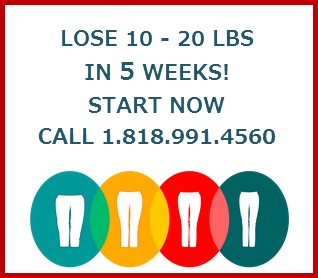Is your weight genetic? Obesity genes account for only 5% of all weight problems. So 95% of any weight problems have nothing to do with your genes. This fact has not affected the high incidence of obesity we see in our culture. We can’t blame the obesity problem on high fat diets either. Even though fat contains 9 calories per gram, as opposed to carbohydrates or protein, which actually contains 4 calories per gram, we still can’t nail our epidemic on the consumption of fat. In fact, research has shown low-fat diets don’t work either and they actually cause more harm than good. And to top it off, avoiding fat in your diet is not a major determinant of body fat. The Women’s Health Initiative, which is the largest clinical trial of diet and body weight, found that 50,000 women on low fat diets had no significant weight loss.
Did you know you could be at a perceived weight that appears to be ideal and actually be considered clinically obese? We call it “Skinny Fat.” Many models who we think are skinny or lean actually have a high percentage of body fat. Anything over 30% is considered clinically obese. Many of these “ideal” model-types have actually very little lean muscle on their bodies. They are literally, as we often say only skin and bones, and let’s include fat under that skin to our description. It’s so important to know what your actual body fat composition, or your fat to muscle ratio, is. This marker determines your true slimness and your true state of health. This is the reason I always recommend having your body fat composition tested.
Even without getting the actual test done, eating in a whole and balanced way, the method I teach clients, is the ultimate prevention of falling into the “skinny fat” category. Here’s a secret. You can actually eat more when you have a higher percentage of lean muscle mass than less to maintain your weight. Your body becomes a virtual furnace and can efficiently and easily break down what you consume. I’m not saying it easily burns everything down. If you feed your body unhealthy foods, your muscle mass will decrease and so will your furnace’s ability to burn calories. There are two main things that increase lean muscle mass—resistance exercise and protein. Both in appropriate amounts for your body size and exercise level will give you the desired lean muscle to fat ratio you are looking for.
Back to the issue of treating obesity and weight, the ultimate is in personalizing our approach. In my field of nutrition, we are hearing more and more about something called Nutrigenomics. It is the science of how we can use food to influence our genes. Yes, you heard that right. Our diet can influence and potentially change our genes. Let’s call it Genetic Eating if you will.
When we give our bodies the building blocks and the proper nutrition, our genes get turned on, so to speak. Simply put, we come into this world with a certain genetic makeup and if we don’t feed our genes properly, the expression of our genes stops. For example, let’s call it the healthy weight gene. Without the proper nutrients, this gene shuts down, weight gain takes over, which is what you see. In order to turn the genetic light switch back on, we need to give our bodies the right nutritional current so they work. Of course, this is a very simple explanation of an extremely complex process. The most important thing for you to understand is you can change your genes, fit into your jeans, and your diet plays one of the most crucial roles in this regard.Until next time, stay healthy and choose your foods carefully!
Please email me today and leave your comments at monika@coachingforhealth.com.
(c) Monika Klein, B.S., C.N. is an award winning clinical nutritionist and weight loss expert. Monika is the “Compassionate and Practical Nutrition and Lifestyle Coach.” Her company, Coaching For Health, offers life transforming weight loss and wellness programs, classes and products throughout the world. To learn more about Monika’s services and programs, visit www.coachingforhealth.com.













